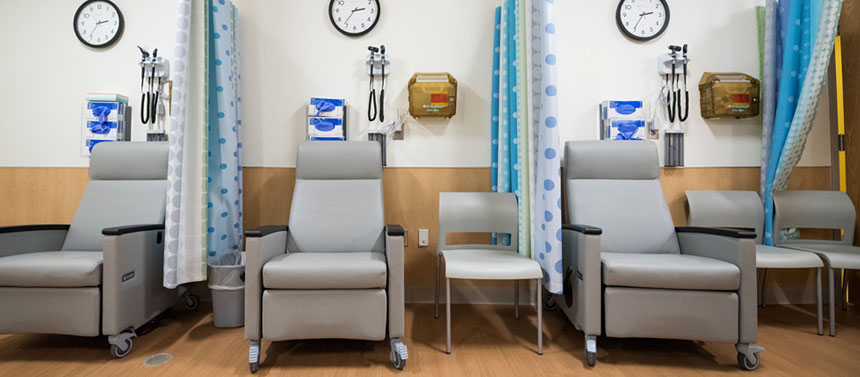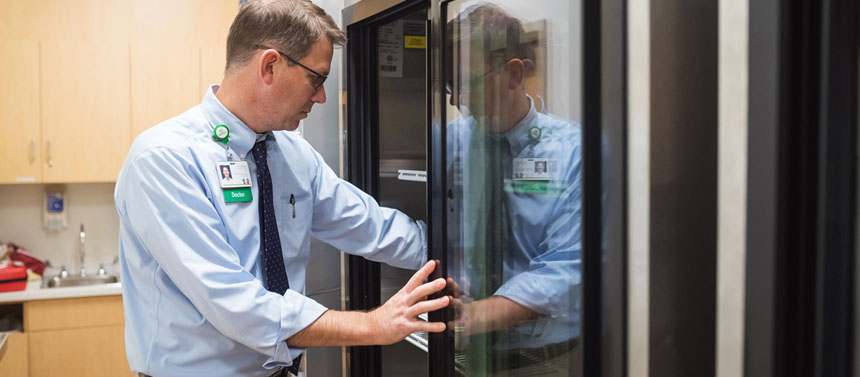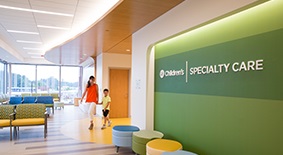Food allergies cause an abnormal reaction to a particular food. When a child’s body is exposed to a food that it considers harmful, the child’s immune system will react with symptoms that can range from minor to life-threatening. Food allergies affect millions of children around the world. It is currently estimated that between 5 percent and 10 percent of children in the U.S. have a food allergy, approximately one child in every school classroom.
What causes food allergies?
The causes of food allergies are not yet fully understood. While many exciting discoveries have been made over the past decade, many fundamental questions still remain.
When do children develop food allergies?
Food allergies typically develop within the first year of a child’s life, but they can also develop later in life.
What are the most common types of food allergies in children?
Although more than 170 foods have been reported to cause allergic reactions, eight food groups are estimated to cause about 90 percent of all food allergies in the U.S., which include:
- Milk
- Eggs
- Peanuts
- Tree nuts
- Wheat
- Soy
- Fish
- Crustacean shellfish
- Sesame
What are the most common symptoms of food allergies?
Allergic reactions to foods are unpredictable and can manifest through a wide range of signs and symptoms with varying severity. The most common signs and symptoms develop quickly after exposure and include:
- Hives
- Tissue swelling
- Drop in blood pressure
- Dizziness
- Coughing
- Vomiting
- Stomach cramps
- Nausea
Food allergies also remain the most common trigger of anaphylaxis (a rapid, potentially life-threatening systemic allergic reaction) among U.S. children.
What treatments are available for children with food allergies?
The only FDA-approved medications for the treatment of a food allergy at this time are Xolair (omalizumab) and Palforzia. While both of these treatments have been shown to improve quality of life by reducing the risks associated with accidental exposure, they are not cures for food allergy. During treatment, families must continue to carefully avoid contact with allergens and constantly be prepared to treat a reaction that occurs following accidental exposure. This can affect a child and family’s social interactions and routine life activities.
Palforzia/oral immunotherapy
Palforzia is an oral immunotherapy for children ages 4 to 17 with a confirmed peanut allergy. While peanut oral immunotherapy (OIT) is not yet FDA-approved in children under age 4, we do offer peanut OIT treatment in children 6 months and older using a commercially available food product. We expanded our OIT treatment to include younger patients based on published research showing that early OIT leads to better long-term outcomes and potentially more normal eating patterns (e.g. "remission" of the allergy). If you have a child aged 4 or older and you are interested in the commercially available product as an alternative to Palforzia, talk to your child's provider.
Xolair
Xolair is a biologic medication that was approved in 2024 to help reduce allergic reactions that may occur with an accidental exposure to one or more foods in individuals ages 1 and older with food allergy. Based on prescribing information, Xolair is given as one or more injections under the skin, once every 2 or 4 weeks. If you are interesting in learn more, message your child's allergist via MYchart or call 404-785-KIDS (5437).
Other treatment options
As we gain more experience with its use, we may offer additional forms of OIT/allergen exposure in combination with Xolair. Discuss this option with your child's provider. There are also many other investigational treatment options being studied in our research unit which may be available to your child, if eligible, at no cost as a study participant.
What is the difference between a food allergy and a food intolerance?
While food allergies and food intolerances can have similar symptoms, they are very different conditions. Food allergies cause a reaction from the body’s immune system, while food intolerances do not affect the immune system. In addition, symptoms of food intolerance are typically not as serious and are often digestion related.
What is OIT?
OIT involves giving someone with an allergy a specific amount of the allergen in very small amounts and gradually increasing that dose.
Is OIT a cure for food allergies?
OIT is not a cure for food allergies. While OIT could increase a child’s tolerance of an allergen like peanuts if an accidental exposure occurs, it will not cure the allergy. Children must still avoid foods containing the allergen, and an epinephrine auto-injector device (e.g., EpiPen or AUVI-Q) should be carried at all times.
What are the potential side effects of OIT?
While side effects will vary by child and can range from mild to severe, the most common side effects of OIT include:
- Abdominal pain
- Vomiting
- Oral itching or discomfort
- Eosinophilic esophagitis
- Rash, hives or swelling
- Anaphylaxis
What is Palforzia?
Palforzia, which comes in powder-filled capsules, is an OIT for children ages 4 to 17 with a confirmed peanut allergy.
How does this peanut allergy treatment work?
Palforzia works like other OITs by gradually exposing a child to an allergen, in this case peanuts. The goal is to increase the threshold that triggers an allergic reaction in your child. Daily exposure to peanut protein, which is the active ingredient in Palforzia, helps lessen the body’s sensitivity to peanuts. The amount of the peanut protein is increased over time as the dose of the medication is adjusted.
How long does this treatment last?
This treatment is a long-term commitment. Your child will have to take medication every day during the up-dosing and maintenance phases. These phases will take place over several months to years and may continue indefinitely. Researchers are currently studying whether some patients may be able to successfully discontinue treatment.
What are the benefits of this peanut allergy treatment?
The main benefit of Palforzia is peace of mind. This treatment can help reduce the severity of allergic reactions, including anaphylaxis, that may occur when your child is accidentally exposed to peanuts.
Will this treatment cure my child’s peanut allergy?
While this treatment could increase a child’s tolerance to peanuts if an accidental exposure occurs, it will not cure a peanut allergy. Children must still avoid foods containing peanuts, and an epinephrine auto-injector device (e.g., EpiPen or AUVI-Q) should be carried with them at all times.
Is my child eligible to receive this peanut allergy treatment?
This treatment is for children ages 4 to 17 with a confirmed peanut allergy. Children who turn 18 while taking Palforzia should continue taking it. Some factors may prohibit a child from receiving this treatment, including medical diagnoses, such as severe asthma, eosinophilic esophagitis and/or the use of certain medication.
How can I get this peanut allergy treatment for my child?
The decision to pursue an evaluation for eligibility and eventually treatment should be based on your individual and family factors. If your child meets current eligibility requirements and if your family can accommodate all considerations into your daily routine, we recommend you email our team at peanutoit@choa.org call 404-785-KIDS (5437) to start the formal clinical review process. Note, this email address is not to be used for emergencies or clinical advice.
Every candidate at Children’s will be assessed by a provider at the Center for Advanced Pediatrics before starting treatment.
How much does this peanut allergy treatment cost? Is it covered by insurance?
Contact your insurance provider or the pharmaceutical manufacturer, Aimmune Therapeutics, for more information. Note: Children’s does not have any input or control regarding the cost of the treatment. The price is regulated by the pharmaceutical company.
How will this treatment impact our family’s daily life?
There are several considerations to take into account before starting Palforzia, including:
- Long-term commitment: This treatment is a serious and long-term commitment. Your child will have to take medication every day during the up-dosing and maintenance phases. These phases will take place over several months to years and may continue indefinitely.
- Time commitment: The initial dosing appointment and subsequent up-dosing appointments will take place at the Center for Advanced Pediatrics. The initial appointment will take approximately three to four hours. Up-dosing appointments will take place every other week and will last up to three hours each. Time away from work and school should be factored into your family’s decision.
- Adherence to daily procedures: Most of the dosing will take place at a child’s home. A parent or guardian will assume the role of at-home caregiver to give dosing appropriately and on time. After dosing, there will be a home monitoring period that lasts two to four hours, when a child will have to avoid exercise, including sports, hot showers and other activities that may increase body temperature.
- Adverse events: Anaphylaxis is a known risk of this treatment and a potential serious adverse reaction that will require using an epinephrine auto-injector device (e.g., EpiPen or AUVI-Q) and seeking immediate medical attention. Parents or guardians administering the treatment at home must be comfortable using an epinephrine auto-injector and taking immediate action following a serious adverse reaction (e.g., how to call the emergency department or when to go to the emergency department). Our providers will review this with your family in the clinic before and during treatment.
What is Xolair?
Xolair is an injectable prescription medicine used to reduce allergic reactions to multiple foods, including peanuts, following an accidental exposure. It is for individuals ages 1 and older.
How does this medication work?
Xolair is designed to target and block Immunoglobulin E (IgE) in the body, minimizing the allergic reaction.
How long does this treatment last?
This treatment is a long-term commitment.
What are the benefits of this treatment?
The main benefit of Xolair is peace of mind. This treatment can help reduce the severity of allergic reactions, including anaphylaxis, that may occur when your child is accidentally exposed to peanuts.
Will this treatment cure my child’s food allergy?
This treatment will not cure a food allergy. Children must still avoid foods containing peanuts, and an epinephrine auto-injector device (e.g., EpiPen or AUVI-Q) should be carried with them at all times.
Is my child eligible to receive this food allergy treatment?
This treatment is for individuals ages 1 and older with a confirmed food allergy. Some factors may prohibit a child from receiving this treatment.
How can I get this food allergy treatment for my child?
The decision to pursue an evaluation for eligibility and eventually treatment should be based on your individual and family factors. If your child meets current eligibility requirements and if your family can accommodate all considerations into your daily routine, we recommend you send a message via MYchart or 404-785-KIDS (5437) to start the formal clinical review process. Note, this email address is not to be used for emergencies or clinical advice.
Every candidate at Children’s will be assessed by a provider at the Center for Advanced Pediatrics before starting treatment.
How much does this food allergy treatment cost? Is it covered by insurance?
Contact your insurance provider or the pharmaceutical manufacturer. Note: Children’s does not have any input or control regarding the cost of the treatment. The price is regulated by the pharmaceutical company.
Food Allergy Tips for Parents
Led by Brian Vickery, MD, a national leader in pediatric food allergies, the Children’s Food Allergy Program is dedicated to performing impactful research and delivering valuable, high-quality, patient-centered care to help transform the lives of children and teens affected by food allergies.
What do we treat?
Our team of pediatric-trained experts diagnoses and treats children with a wide range of conditions, including:
- IgE-mediated food allergies
- Anaphylaxis
- Oral allergy syndrome or pollen-food allergy syndrome
- Eosinophilic esophagitis and gastroenteritis
- Food protein-induced proctocolitis
- Food protein-induced enterocolitis syndrome (FPIES)
- Skin conditions frequently linked to a food allergy, such as urticaria (hives), angioedema (swelling) and atopic dermatitis (eczema)
- Other allergic diseases that may co-exist in children with food allergies, including atopic dermatitis (eczema), environmental allergies and asthma
What services are offered through the Children’s Food Allergy Program?
- State-of-the-art diagnostics (skin-prick tests and specialized blood testing)
- Anaphylaxis preparedness (customized action plans and hands-on teaching with epinephrine auto-injectors)
- Oral food challenges
- Evaluation of high-risk infants and guided oral exposure to prevent peanut allergy
- Multidisciplinary care with support from other affiliated medical specialties and ancillary services, such as nutrition and psychology
- Oral immunotherapy for peanut allergy (Palforzia)
- Omalizumab injections (Xolair)
- Clinical research opportunities
- Access to new experimental treatments through clinical trials
In the past few years, exciting research has led to the development of new treatments for food allergies, including peanut allergy. In fact, Children's was one of 10 clinical sites for the Phase 3 OUtMATCH study, which led to the 2024 approval of Xolair, a medication used to help reduce allergic reactions that may occur with accidental exposure to one of more foods. At Children’s, we are committed to offering our patients access to these treatments through clinical trials or routine clinical care as the new treatments become available.
What food allergy clinical trials are currently being offered at Children’s?
Information about current clinical trials, including trial descriptions and eligibility criteria, can be found on our research web page. You may also call 404-785-6448 or email foodallergyresearch@choa.org to learn more.
What other types of food allergy research activities are taking place at Children's?
- Social and psychological burdens: Food allergies can be very stressful for families. Dr. Vickery and his team are conducting studies to better understand the social and psychological burdens caused by food allergies in order to develop better solutions to address these burdens.
- Share your experience: As a FARE Center of Distinction, our team encourages interested families to get involved by sharing your experiences with the national FARE Patient Registry. The registry helps researchers better understand food allergies and their impact, reveals opportunities to improve the care food allergy patients receive, and powers the search for new ways to diagnose, treat and ultimately cure food allergies.
What are clinical trials?
Clinical trials are research studies that explore whether a medical strategy, treatment or device is safe and effective for people. Clinical trial participants help researchers answer key questions that can lead to new cures and treatments.
Which types of food allergies are included in the clinical trials?
Our clinical trials focus on the major food allergens, including peanuts, milk, eggs and tree nuts. All food allergens are important, and we hope to be able to include more patients in future studies. We encourage anyone with a food allergy to contact us through our registry, as it helps us know our community’s needs when we are approached about a potential study.
What types of trials are expected to be offered in the future?
Visit our research page, as we will update information about future trials as they become available.
Can I enroll my child in more than one trial at the same time?
This depends on the specific study protocol, but most studies prohibit simultaneous involvement in more than one clinical trial. Other types of studies, such as questionnaire studies or lab-based studies, may be allowed.
Is there a cost for enrolling my child in a clinical trial?
One of the advantages of participating in clinical research is that there is no direct financial cost. Companies provide their experimental medications for free. There may be other types of indirect costs associated with participating, such as the cost of travel to the center or missed work. While insurance may be billed for certain illnesses that occur during a trial, the trial’s sponsor typically assumes responsibility for the medical services delivered during the trial. If you have more questions about this, discuss them with the study team or email us at foodallergyresearch@choa.org.
How can I sign my child up to participate in a food allergy clinical trial?
If you are interested in registering your child as a potential participant, email our team at foodallergyresearch@choa.org. We will do our best to respond within 3 business days.
What happens once we complete the registry questionnaire? Do we need to circle back and periodically check for new trials, or will we be contacted when trials become available?
Once you complete the registry questionnaire, your entry is recorded in a database that we will use once we have a study that is ready to be recruited. If your child looks like a good match for a study, we will contact you at the number you provided.
Can my child participate remotely?
For safety reasons, we ask that participants live within a reasonable distance of the study center.

FDA approves new treatment for food allergy
Children's was one of 10 clinical sites for the Phase 3 OUtMATCH study which led to the approval of Xolair. The new treatment may help reduce the severity of allergic reactions, including anaphylaxis, that may occur with accidental exposure to one or more foods.
LEARN MOREPediatric allergists and immunologists
- Brian P. Vickery, MD, Director, Food Allergy Program; Division Chief, Allergy and Immunology
- Melinda Rathkopf, MD, Medical Director
- Gerald Bell Lee, MD
- Idil Ezhuthachan, MD
Pediatric psychologist
Advanced practice providers
Our Food Allergy Program is located on the fifth floor of the Center for Advanced Pediatrics in Atlanta.
Center for Advanced Pediatrics
2174 North Druid Hills Road NE
Atlanta, GA 30329
Contact Us 404-785-KIDS (5437)












